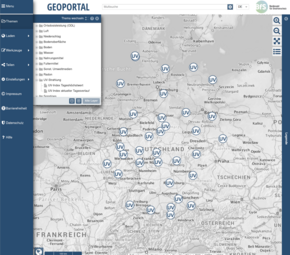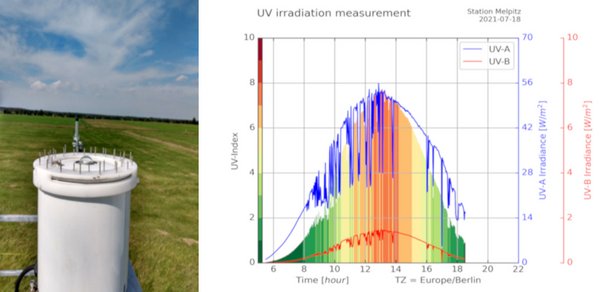
Observation side of the UV-network (2022), Screenshot of the BfS Geoportal
Motivation:
The UV sunburn-effective irradiation component of sunlight can lead to sunburn and long-term damage to the human skin. The erythemal part of UV radiation that causes sunburn depends to a large extent on the position of the sun, the time of day, the geographic latitude, the total ozone concentration in the atmosphere, the cloudiness and the altitude of a location and the degree of cloud cover, and/which is described by the UV index.
Due to the health risks to the population fromto erythemal UV irradiation, it is important to have comprehensive, daily measurements and forecasts of the UV index. For this reason, the Federal Office for Radiation Protection (BfS) operates a nationwide UV measurement network. In cooperation with partner institutions, high-quality UV measurements are carried out at more than 30 locations. The resulting observation data are made available centrally to the BfS for processing

